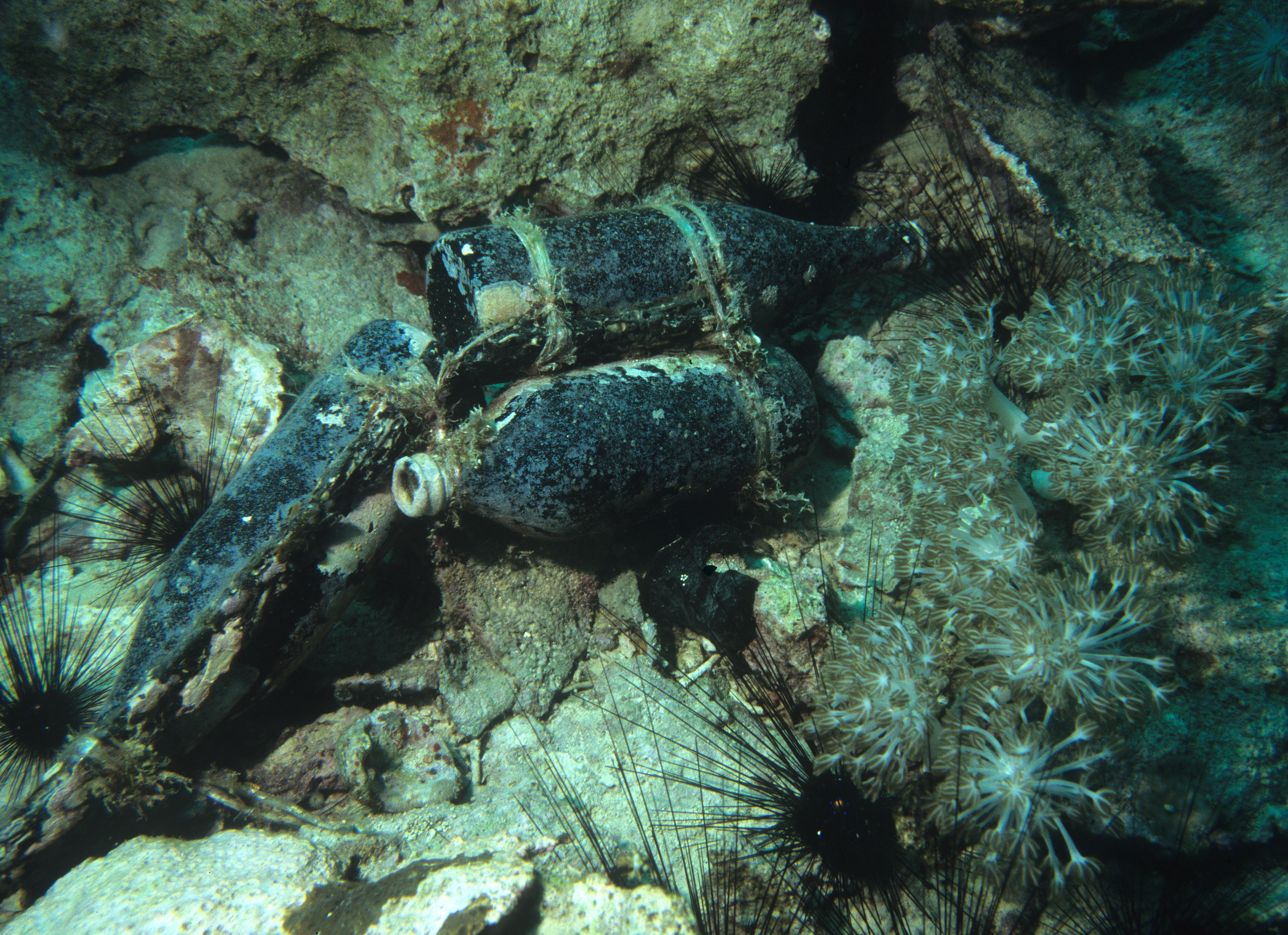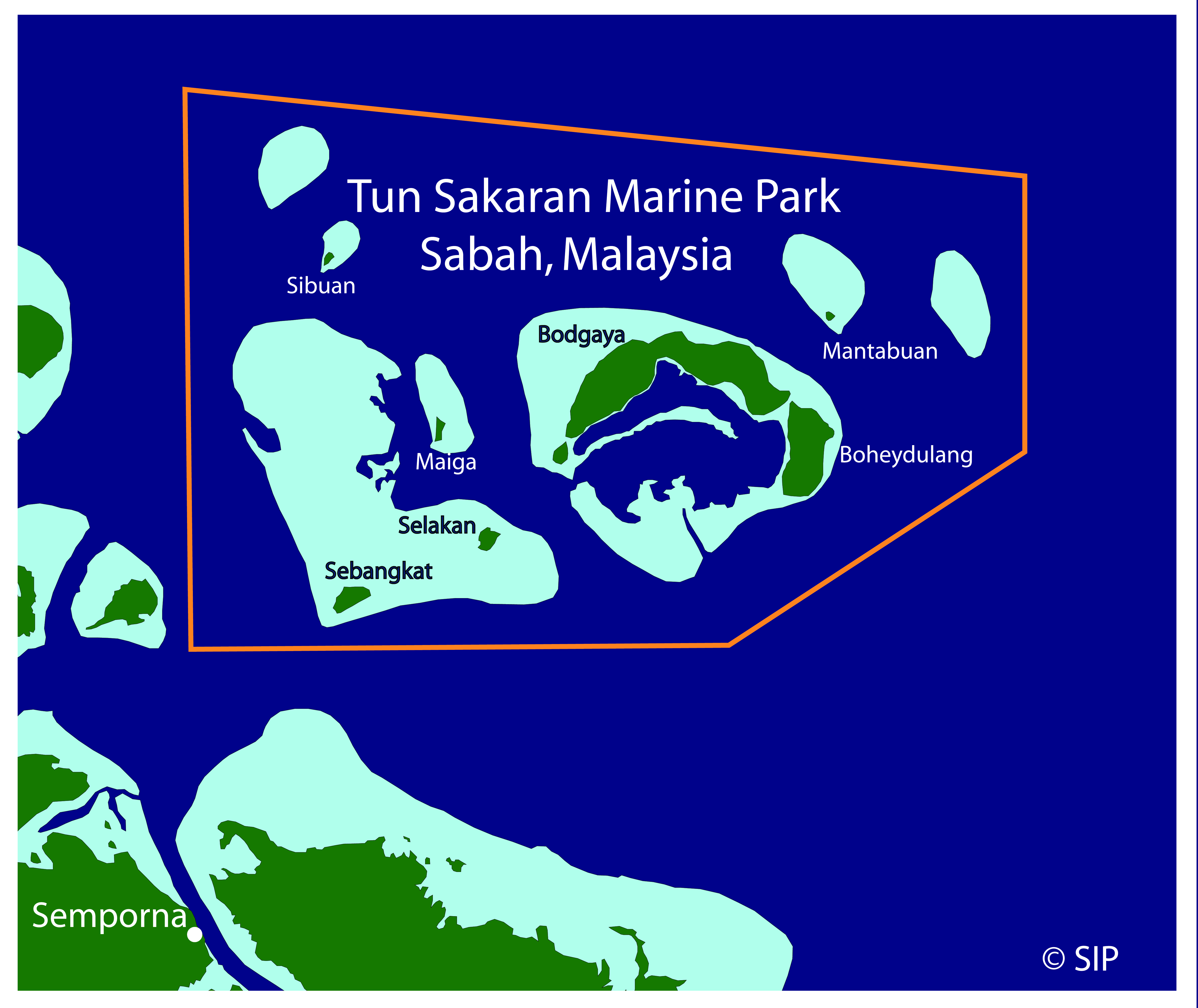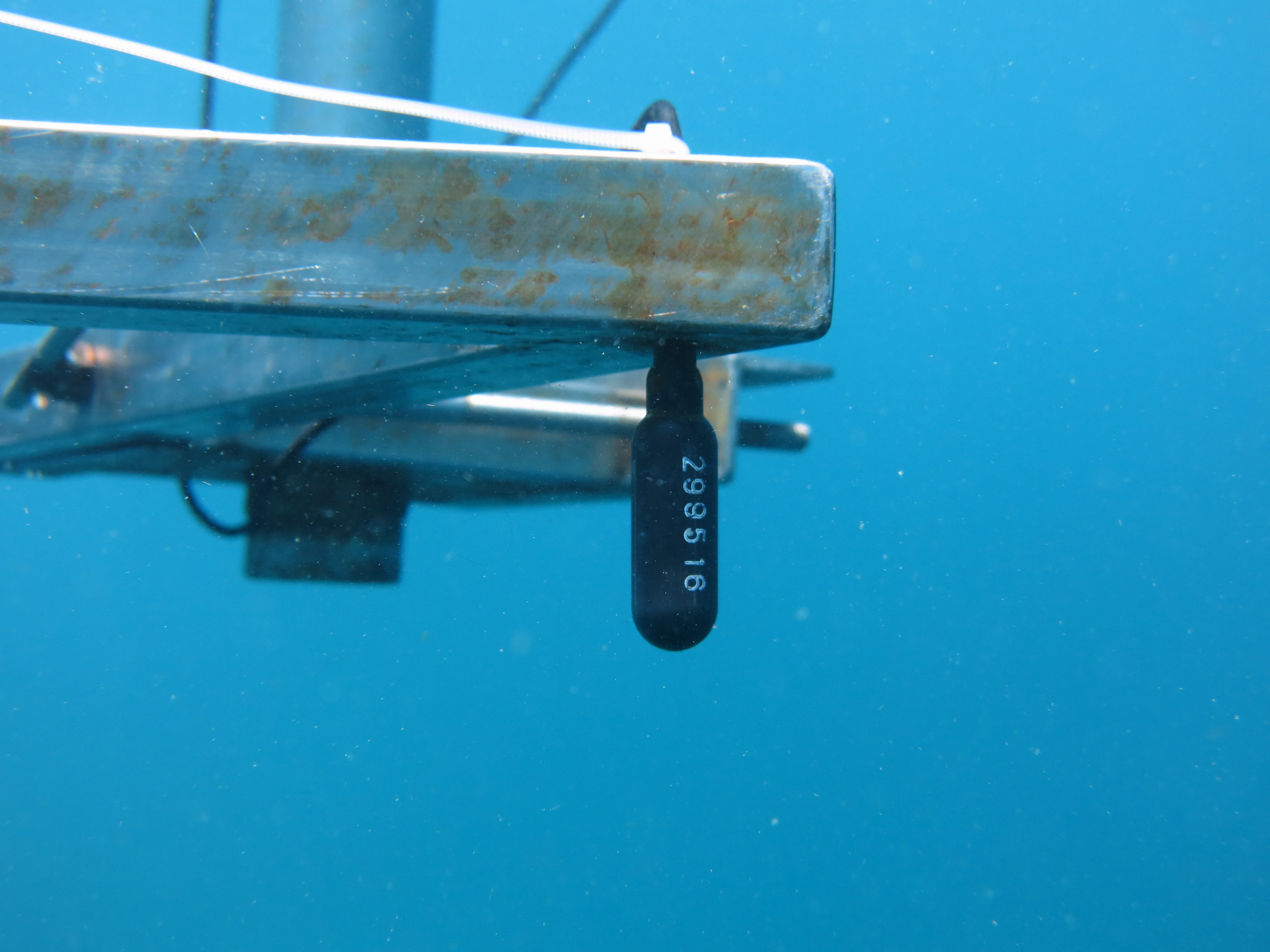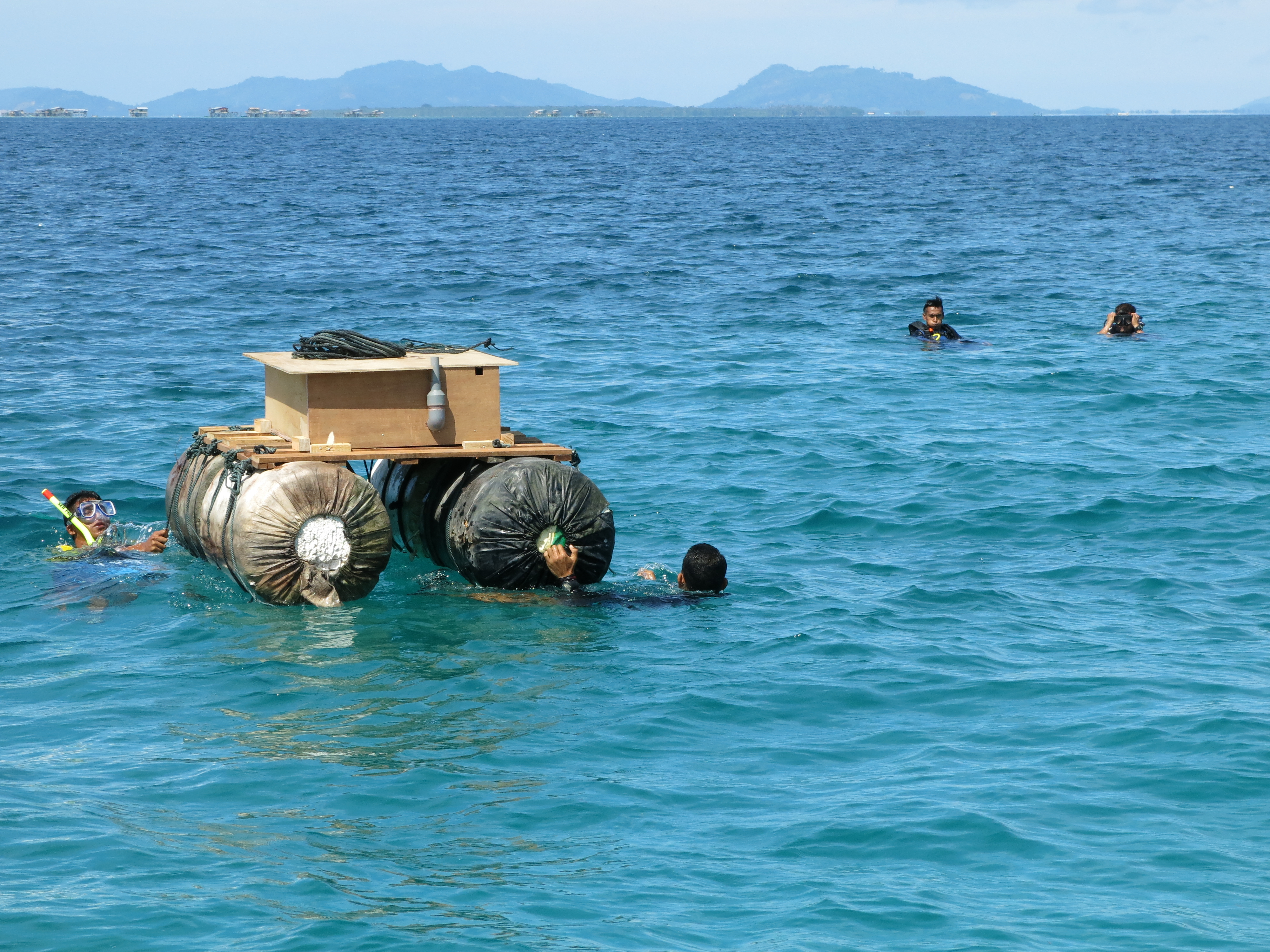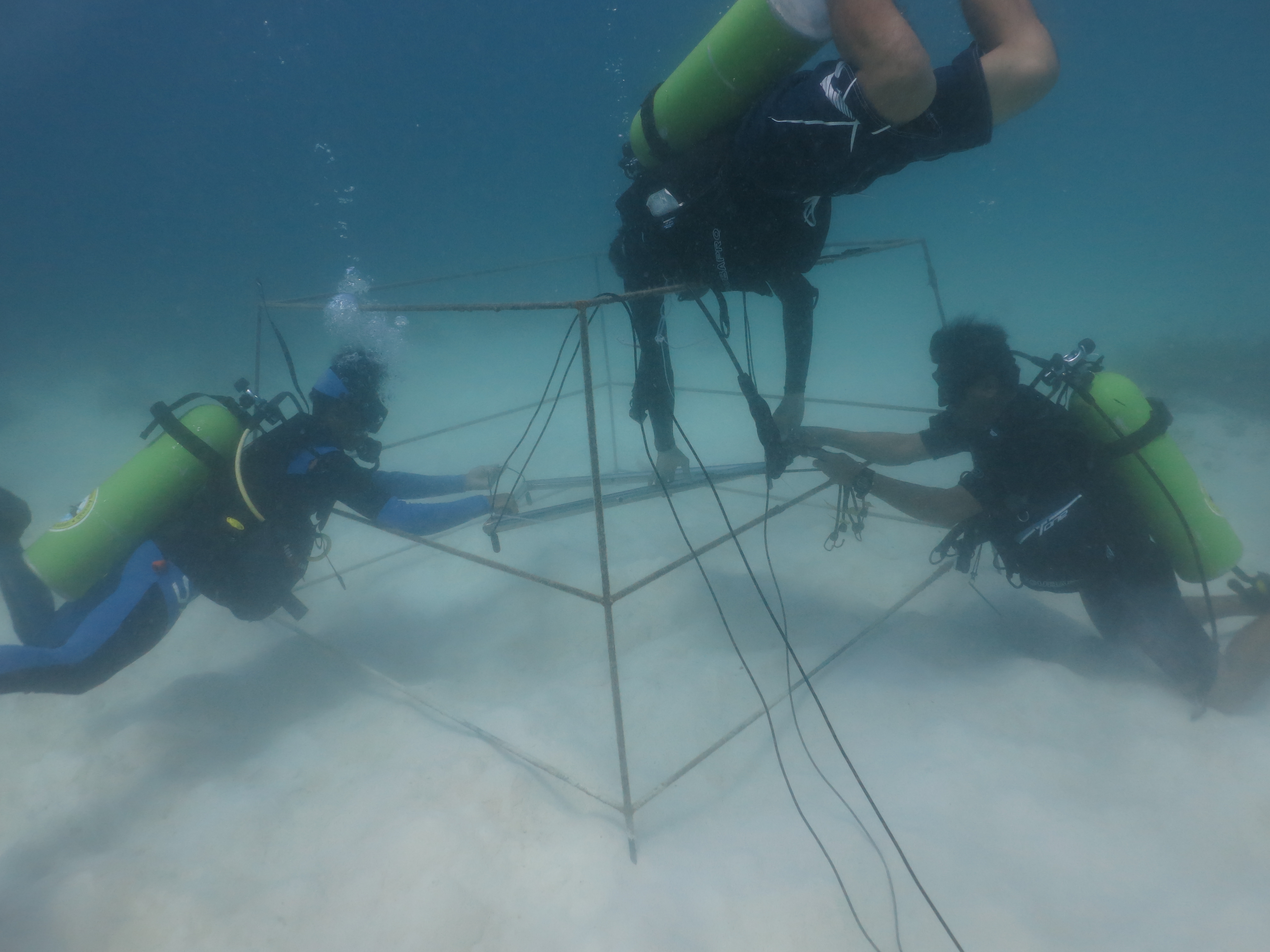Fighting fish bombing with high tech
Fishing with explosives, although illegal, remains a very significant threat to coral reefs in certain parts of the world. In Sabah, East Malaysia (Borneo), the weapon of choice is the ‘bottle bomb’, a home-made device that is packed with a mixture of kerosene and fertiliser and ignited by a fuse. It is a deadly device and accidents are not infrequent.

These bomb fuses were smuggled across the border into Sabah from the Philippines and seized by Sabah Parks. © Photo by Elizabeth Wood | MCS
Each bomb blast has an impact over an area about five metres in diameter. This may seem insignificant, but it soon adds up to destruction on a frightening scale. There is about 100 kilometres of fringing reef in the newly created marine park where Marine Conservation Society are working with Sabah Parks, so 20,000 evenly distributed bombs could damage the entire reef system. Although this sounds like a large number, if only 10 bombs were detonated each day then the total of 20,000 would be reached after less than six years. There have been recent occasions when we have heard two or three explosions during a single one-hour dive in the park, and one fisherman who has lived in the area for 40 years told us not so long ago that there used to be ‘many, many bombs – about 100 a day’.
In addition to heavily scarred reefs, our surveys reveal that coral reefs broken up by fish bombing may never fully recover and regain their diversity and habitat complexity. Biodiversity, productivity and the value of the reef for fisheries and tourism are hugely affected by fish bombing, and many people’s livelihoods are ruined.
Many local fishermen condemn fish bombing, but there is a hard core who continue with it because it is quick, relatively cheap and yields a large ‘catch’ in a short time. The fish bombers operate when no-one is around and are expert at evading the authorities. Above water, the explosion can only be heard from a few hundred metres away, but underwater the sound travels far and fast, and can be detected many kilometres from its source.
Our solution to the problem of detecting fish bombing has been for MCS to collaborate with the University of St Andrews (UK) in the development of an acoustic detection system that picks up the sound of the bomb explosion and feeds this information back to the authorities in real time.
Each detection unit consists of an array of three hydrophones on a triangular frame and each hydrophone is connected by cable to a software system that has been customised to distinguish the sounds of fish bombs from other underwater noises, such as boat engines, divers and snapping shrimps.
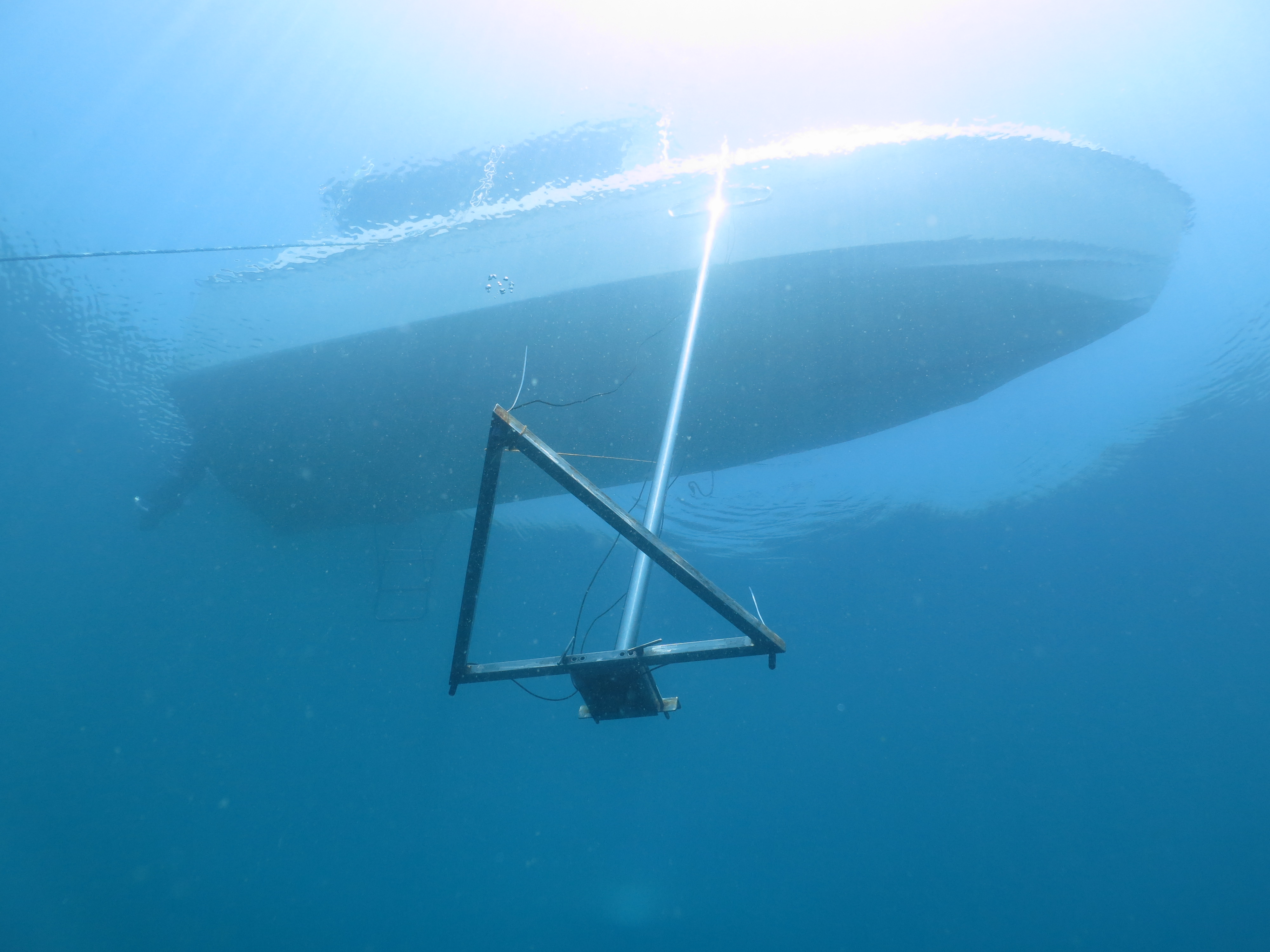
A hydrophone unit underwater, collecting data during the research and development phase. © Photo by Elizabeth Wood | MCS
The audio is converted to digital data and transmitted wirelessly to the base station, where it is stored and sent directly to the Sabah Parks enforcement team so that it can respond immediately when a bomb explodes.
The research and development phase has been completed and, for both testing and security reasons, we have made movable floating platforms to house the hardware and software. Our next blog will focus on the data that have been collected and how the new system will eliminate fish bombing in the area.
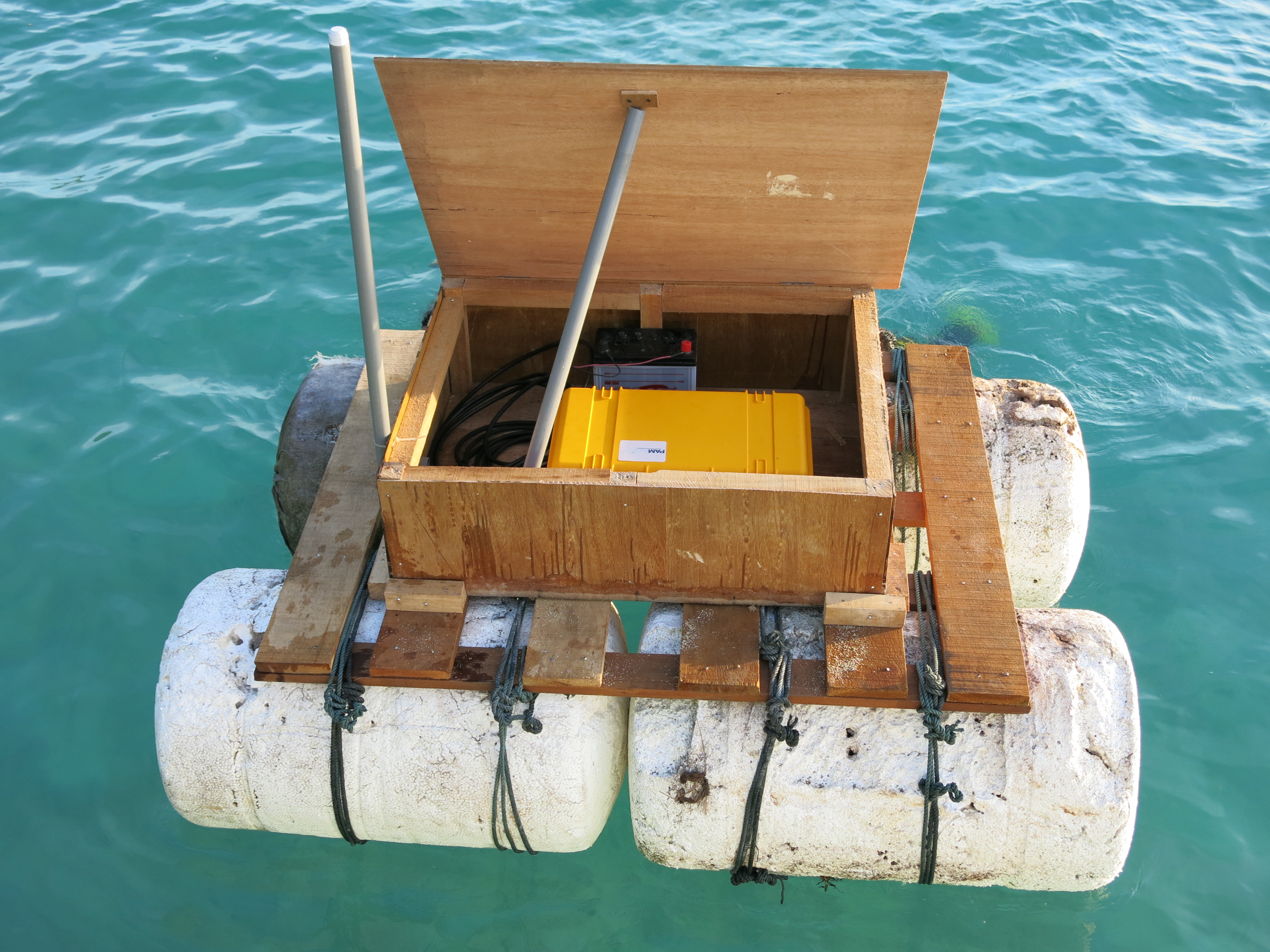
A floating platform attached to the hydrophone frame and supporting the hard, waterproof case that contains ‘Decimus’ bomb detection software and a solar-powered battery. © Photo by Elizabeth Wood | MCS
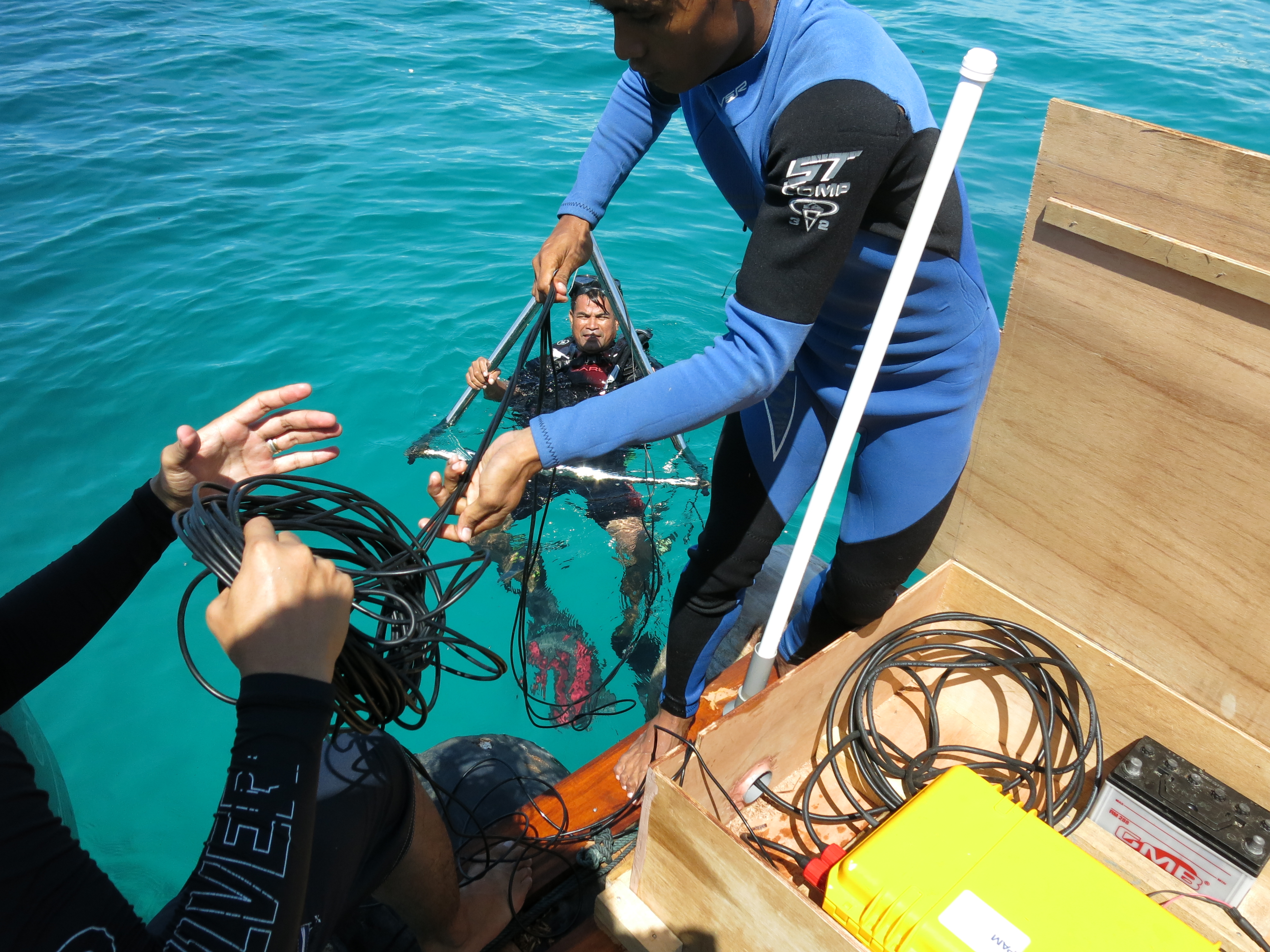
Assembling the hydrophone frame and linking to the Decimus detection system. © Photo by Elizabeth Wood | MCS

